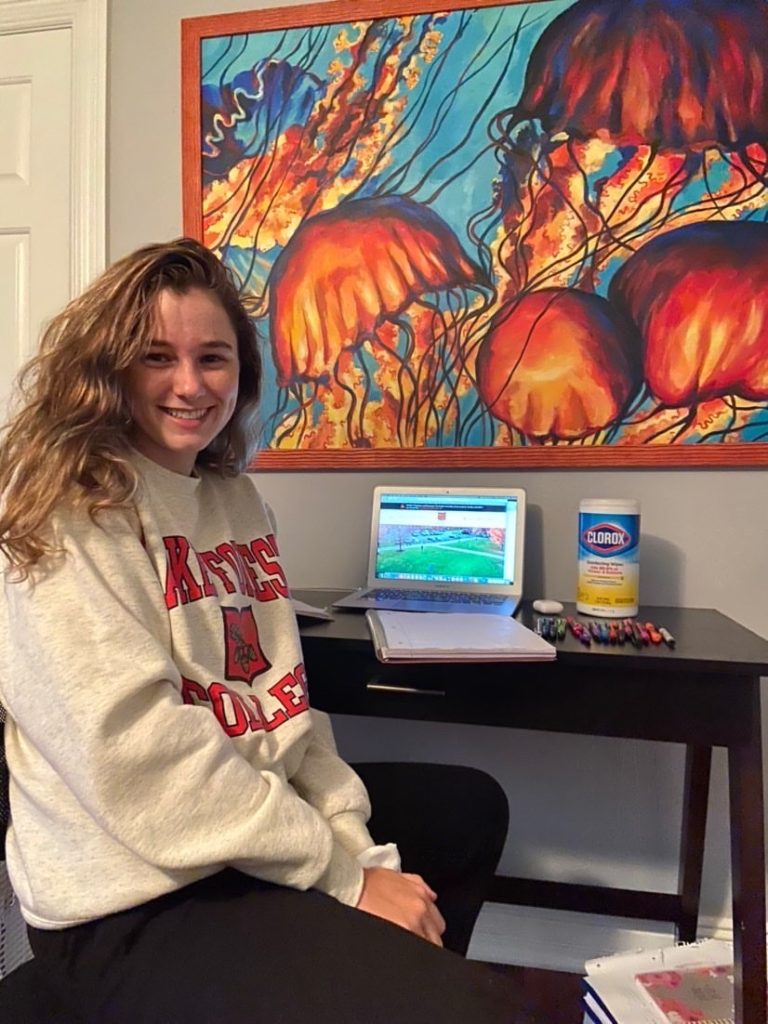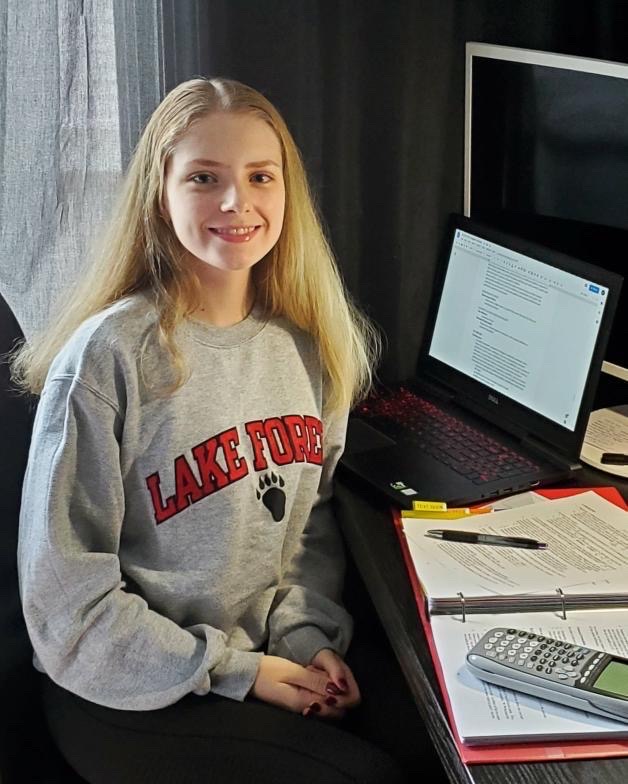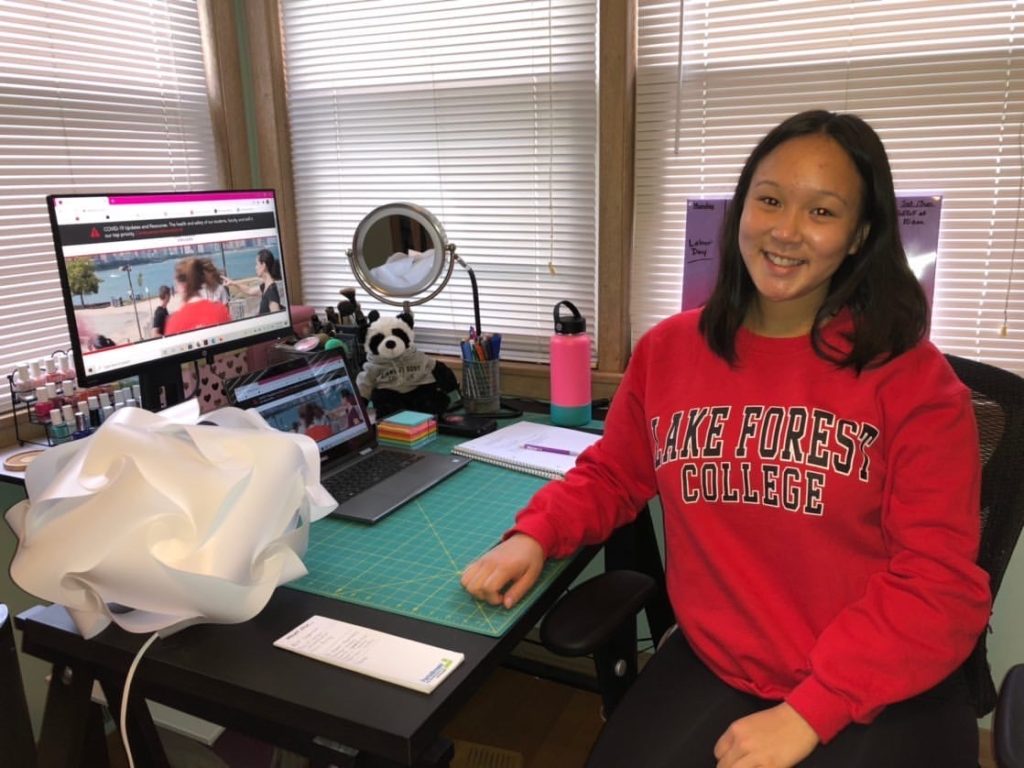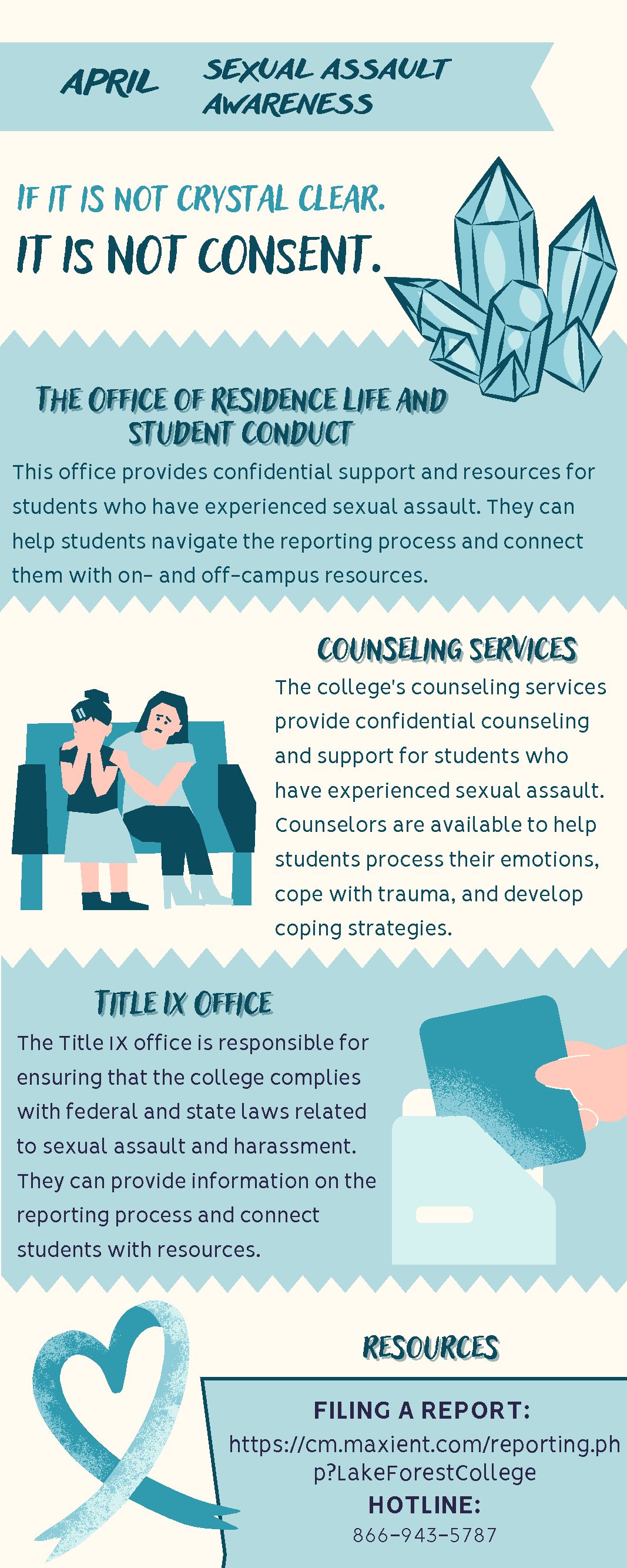The Article below was published in Vol. 136, Issue 1 of the Lake Forest College Stentor on September 18, 2020.
Emma G. Overton ’21
Editor-in-Chief and News Editor




Students share their remote learning setups (Lake Forest College | Instagram)
The transition to remote learning due to the COVID-19 pandemic during the Spring 2020 semester became official on March 16, following an announcement by President Schutt that the College would move to online learning and cease the residential program for the remainder of the semester. This transition was, according to Schutt, “…necessary to reduce the risk of community transmission of COVID-19.” Following the conclusion of the Spring 2020 semester, College administrators announced plans for a return to campus for the Fall 2020 semester. On May 14, Schutt sent an all-campus email explaining that “Lake Forest College is planning to resume classes on campus in the Fall 2020 Semester. Our academic program, activities, relationships, and discoveries are all deeply connected to our beautiful campus, and our students want to live, grow, and learn here, not in a hundred other scattered locations.” He further noted that “[w]e are also committed to the health and safety of our students, faculty, and staff. With their well-being firmly in mind, the College is working hard on preparations for the fall semester.” Schutt stated that three planning teams were meeting to prepare for a return to campus: The Campus Spaces Team, The Campus Community Team, and The Transition Support Team. However, despite these efforts, Schutt also mentioned the possibility of a change of plans, noting that “even as the College prepares for an on-campus fall semester, we are also actively, responsibly planning for contingencies outside our control.”
On July 1, Schutt sent the “Lake Forest College Plan for the Fall 2020 Semester in Response to Coronavirus” to the campus community. The 11-page document outlined plans for all facets of campus life, including Health and Safety considerations for vulnerable populations, plans for reducing the residential density of campus, as well as plans for testing, contact tracing, isolation, and quarantine.
However, despite the plans by the College for a return to campus for the Fall 2020 semester, on July 29, Schutt announced that the College would “…pivot to a non-residential fall semester in which students stay home, faculty teach all courses remotely, and non-essential staff continue to work from home.” Schutt explained that “the pandemic is rapidly, broadly spreading, contrary to our hopes a month ago. Positive cases and deaths are tragically rising in much of the country, including many of our students’ home locations. The number of COVID-19 patients in American hospitals has never been higher. Numerous state and local governments have imposed quarantines, including Chicago and Cook County, and our own Lake County recommends that people traveling here should self-quarantine for two weeks. Scientists have recently confirmed that 40 percent of infected people are asymptomatic, that the virus can spread indoors through aerosolized transmission, and that transmission can also occur outdoors through prolonged physical contact.” Schutt further noted: “The College’s greatest responsibility…is to protect the health and safety of students, faculty, and staff. Given the relentless progression of the virus, this change to a non-residential fall semester and remote instruction is the only way the College can fulfill that responsibility.” Schutt assured students that “…faculty will provide exceptional remote instruction in your courses, and we will also launch several exciting new programs and activities to help you have fun and stay connected to other students throughout the fall. The Office of Student Affairs, the Career Advancement Center, and the Athletic Department are all at work on these programs and activities…”
The fully remote Fall 2020 semester began on August 24. To understand the impact of the transition, Stentor staff interviewed several college administrators about the fully remote fall semester, and the responses provided were a collaboration between three groups: the Dean of Students, Information Technology Services, and the Transition Support Team.
The three groups explained that the College learned “two major things” from the transition to remote learning during a portion of the Spring semester that factored into the preparation for remote learning this semester. They noted, “we learned that we need to keep doing the things we’ve always done, and done well. A Lake Forest College education is defined by small classes, access to professors, individualized feedback, rigorous courses, and a community that cares for each other. All of those still apply on Zoom.” They explained that an example of this lesson came “…during the turmoil of the unexpected pivot in the spring, we emphasized that students should be allowed to learn asynchronously. We came to recognize, however, that most students wanted to meet in class—even if remotely—and see their classmates and professors. So, for the fall, we turned to synchronous learning as our default mode of operation.”
They also discussed that they “…recognized that we need to work with individual students to make changes when necessary, to facilitate their learning. Students are not numbers at Lake Forest; we strive to know them as human beings…this means that if a student is unable to do synchronous learning, we will allow asynchronous learning. So, while we are keeping constant many of the things that make Lake Forest what it is, we are also making change where necessary in order to be responsive to our students’ needs.”
Regarding the considerations put in place to accommodate students whose circumstances might make remote learning difficult, the groups explained that “where possible, we have helped students acquire the technology they need. When time zones, economic necessity, or caregiving responsibilities made it impossible for students to learn synchronously, we offered a process for them to apply for asynchronous learning. We have re-created in the remote world many of the support structures students were accustomed to find on campus, from tutoring to mental health support.”
Additionally, discussing the resources made available to professors to prepare for a fully remote semester, the groups noted that they “…created five training sessions for faculty in July and August, run by the Office of Faculty Development (OFD), to ensure that faculty were fully supported and trained in remote course design as they approached the fall semester…many of our faculty [also] participated directly in a multi-session seminar in course design and pedagogy facilitated by the Associated Colleges of the Midwest.”
With respect to helping students prepare for the fully remote semester, they noted: “Our Center for Academic Success has developed a robust series of remote supports and Student Affairs staff are reaching out to each and every student to offer support.” Further, they explained that the updated version of Moodle “was designed to give students a central location to interact with their courses, professors, and fellow students…the new Moodle layout provides more space to view and work on assignments, forums, and exams.” Regarding Zoom accounts, the groups shared that the “College has provided Zoom licenses to all students.” Editor’s note: Zoom licenses for Lake Forest College students can be accessed at: lakeforest.edu/studentzoom. They explained that these “licenses remove time and attendee limits, allowing students to engage in academic and social group activities.”
Discussing the challenges of the remote semester, the groups noted that “there was the incredibly badly timed problem that Zoom had on the morning of the first day of classes (that was a Zoom-wide problem, not a Lake Forest problem).” Despite this issue, they noted that overall, “…we found that after the first few days, people settled into their learning very successfully.”
Commenting on her remote learning experience this semester, Alex Cantey ’22 of Bentonville, Arkansas stated that “so far this semester it’s not been too bad! I’d say the hardest for me is that I sit in my kitchen, since I don’t have my own desk [or] space and it is the best spot for Wifi. My family and dogs can be distractions, but we’ve been dealing with it pretty well.”
The three College groups further noted that “for the most part” the response from students and parents to the remote semester “has been very positive.” They further explained that “the College made two things clear: first, that we were committed to keeping our community safe; and second, that we would maintain the quality of our education. Because those priorities were clearly communicated to our students and families, they were able to accept any disappointment and move forward with us. Our staff and faculty were also disappointed not to be back, but we understood and endorsed the decision. And frankly, what has happened at many college campuses around the country this semester supports the wisdom of our decision.”
With respect to providing other aspects of the college experience remotely, the groups explained that “the Gates Center, along with other partners across the College, created a virtual Forester Fair, a virtual engagement webpage, and a weekly What’s Happening email to help new—and returning!—students experience at least a part of life outside the classroom. Many clubs and organizations are functioning this fall and contributing to students’ experiences. Other departments like Health and Wellness and Intercultural Relations are developing a robust set of programs to support students during this moment in time.”



